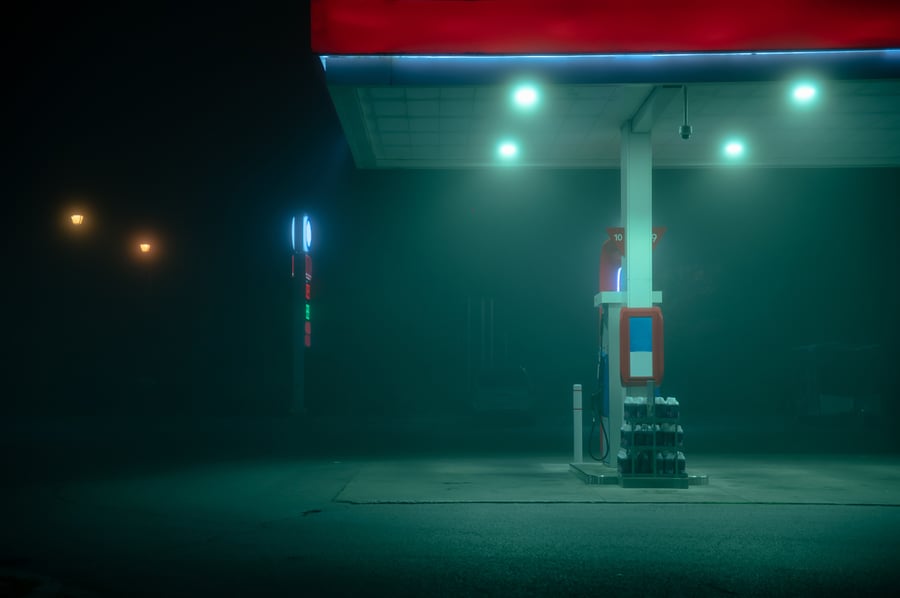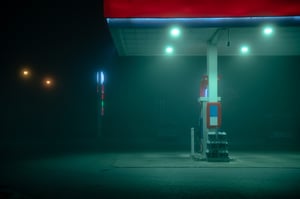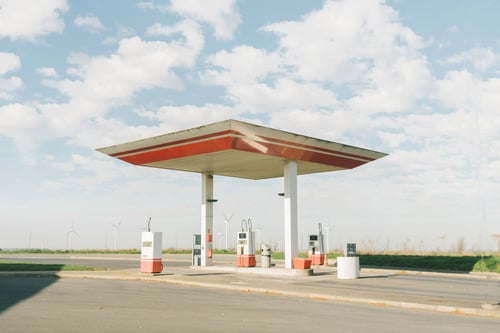5 Signs Your Existing Pricing Display System Is Costing You Money

Your price sign isn’t just a number — it’s the first impression of your brand.
In a marketplace where 89 percent of businesses now compete primarily on customer experience rather than price or product, outdated or unreliable displays can send the wrong message before a customer even pulls up to the pump.
Today’s digital price systems do more than show numbers — they communicate brand consistency, pricing accuracy and trust. Yet many c-store and fuel operators still rely on legacy systems that undercut visibility, drain maintenance budgets and weaken their brand’s impact at street level.
If your display is flickering, outdated or difficult to view in full sunlight, it may not just be inconvenient — it could be slowing traffic and costing sales. While you’re troubleshooting dim digits or waiting for a service call, competitors with sharp, contemporary LED signage are capturing the drive-bys you’re losing.
Below are five ways to recognize when your price display technology is holding your business back — and how PWM Electronic Price Signs, Inc. delivers clarity, reliability and measurable savings.
Outdated Technology That Can’t Keep Up
If your price displays were installed more than a decade ago, they may use older modular or fluorescent lighting systems that consume more energy, offer limited control and require frequent servicing.
Common warning signs include:
- Manual or slow price updates
- Inconsistent brightness or color temperatures
- Difficulty integrating with POS or remote management software
- Obsolete replacement parts or unsupported components
Current-generation SMD LED displays, like those engineered by PWM, use surface-mount diodes that deliver sharper visibility, wider viewing angles and longer lifespans — all while consuming significantly less power. Plus, digital integration allows for real-time price changes from any device, minimizing errors and labor.
Bottom line: Old signage can’t keep pace with your store’s operational needs or today’s consumer expectations.
High Energy Usage That Inflates Operating Costs
Energy efficiency isn’t just about sustainability — it’s about savings. Older price displays can use 250–300 watts, compared to 100 watts or less for modern SMD LED systems achieving the same visibility — often cutting energy use by more than half. Multiply that across multiple signs operating 24/7 and the cost difference becomes substantial.
For example:
A single outdated LED price display can consume 250–300 watts, while an energy-efficient PWM SMD LED sign can achieve the same brightness at 90–120 watts. Over the course of a year, that efficiency translates into hundreds of dollars in electricity savings per sign — and thousands across a network.
PWM’s signage systems are designed with:
- Optimized power management for maximum lumen-per-watt performance
- Automatic brightness control to adjust to ambient light levels
- Weatherproof and corrosion-resistant components that reduce heat loss and extend lifespan
With rising utility costs and sustainability pressures from both regulators and consumers, switching to a more efficient system isn’t just smart … it’s strategic.
Poor Visibility That Hurts Sales
If your signage isn’t easy to read at a distance, in bright sunlight or at night, it’s not doing its job. Poor visibility leads to lost sales as drivers pass by without noticing — or worse, they clearly see your competitor’s prices down the block while yours remain a blur.
Common visibility issues include:
- Dimming LEDs or yellowed lenses
- Limited contrast in direct sunlight
- Glare at night or poor viewing angles
- Inconsistent color representation
PWM’s SMD LED digits use high-contrast diode arrays for superior brightness and visibility up to 160°, ensuring clarity from multiple lanes or distances — even in direct sunlight or heavy glare conditions.
The result: prices that stand out clearly at all times of day and in all weather conditions.
Improved visibility also strengthens your brand image — projecting professionalism, reliability and trust to every passing customer. When your signage looks modern, customers assume your store is modern too.
Frequent Breakdowns and Costly Maintenance
When a display fails, it’s not just an inconvenience — it’s downtime that can impact sales, damage customer trust and create safety concerns for staff who must perform manual updates or repairs. If you’re calling for service every few months, it’s a sign your system is nearing the end of its life — modern sealed housings and electronic coatings can operate for years with minimal maintenance.
Hidden costs add up quickly:
- Service technician fees and replacement parts
- Labor hours spent troubleshooting or calling vendors
- Lost sales from nonfunctioning or unreadable signs
- Increased liability when manual changes require ladder access
PWM signs are built for durability in demanding outdoor conditions, from Texas heat to Midwest winters. With sealed electronics, high-impact housings and proprietary coating technology, they minimize the risk of corrosion, moisture intrusion and electrical failure.
A modern, low-maintenance display not only reduces repair costs, it frees your team to focus on customers instead of equipment.
Lack of Integration and Remote Management
Today’s c-store environments are data-driven. From fuel pricing automation to POS synchronization, everything runs smoother when systems communicate seamlessly. If your current display requires manual price updates or doesn’t integrate with your control software, you’re missing out on both efficiency and accuracy.
Advanced display systems support:
- Wireless or networked updates from a central console
- Real-time monitoring of display status and brightness
- Automatic price synchronization with POS or back-office systems
- Multi-site management for larger chains
PWM display systems integrate seamlessly with leading POS and fuel controller platforms, supporting real-time monitoring, remote updates and multi-site synchronization — reducing manual labor and ensuring pricing accuracy across every location.
Fewer manual tasks mean faster updates, fewer errors and improved pricing responsiveness in volatile fuel markets.
The Cost of Staying Behind
Old signage doesn’t just cost you money in maintenance and energy — it can cost you in brand perception and missed revenue. A dull or outdated display makes a negative first impression and suggests a lack of investment in customer experience. Meanwhile, competitors with bright, modern LED price signs grab attention and set the standard for professional presentation.
The real ROI of modern signage lies in:
- Lower lifetime energy and maintenance costs
- Improved visibility and traffic conversion
- Seamless pricing management and data integration
- Stronger brand consistency and customer trust
Across the fuel industry, modern LED signage delivers a measurable return, often achieving full ROI in less than 2 years through lower power use, reduced maintenance and improved customer draw.
Outdated signage doesn’t just fade but erodes profitability.
Upgrade Once. Save for Years.
PWM Electronic Price Signs has been setting the global standard in energy-efficient signage for over 50 years. Engineered with SMD LED precision and built to endure any environment, our systems are trusted by major fuel brands for their clarity, durability and return on investment.
Contact us today to explore how upgrading once can deliver lasting savings and performance.






